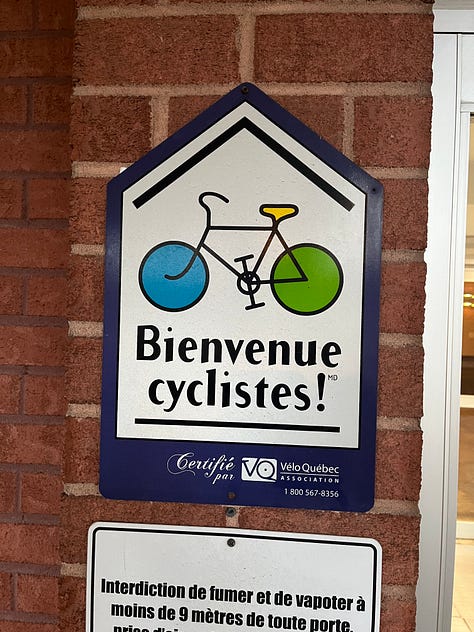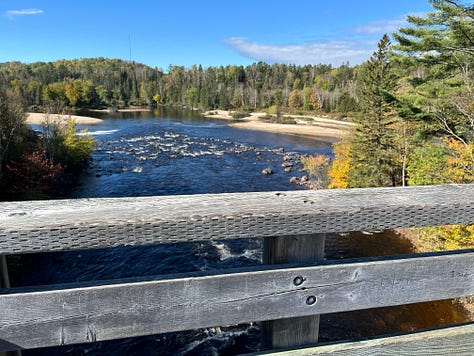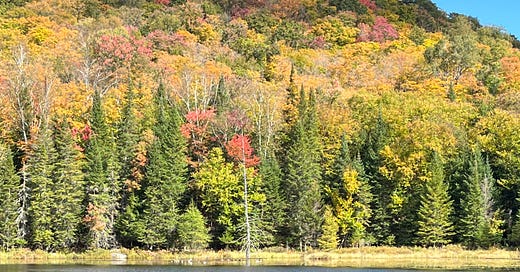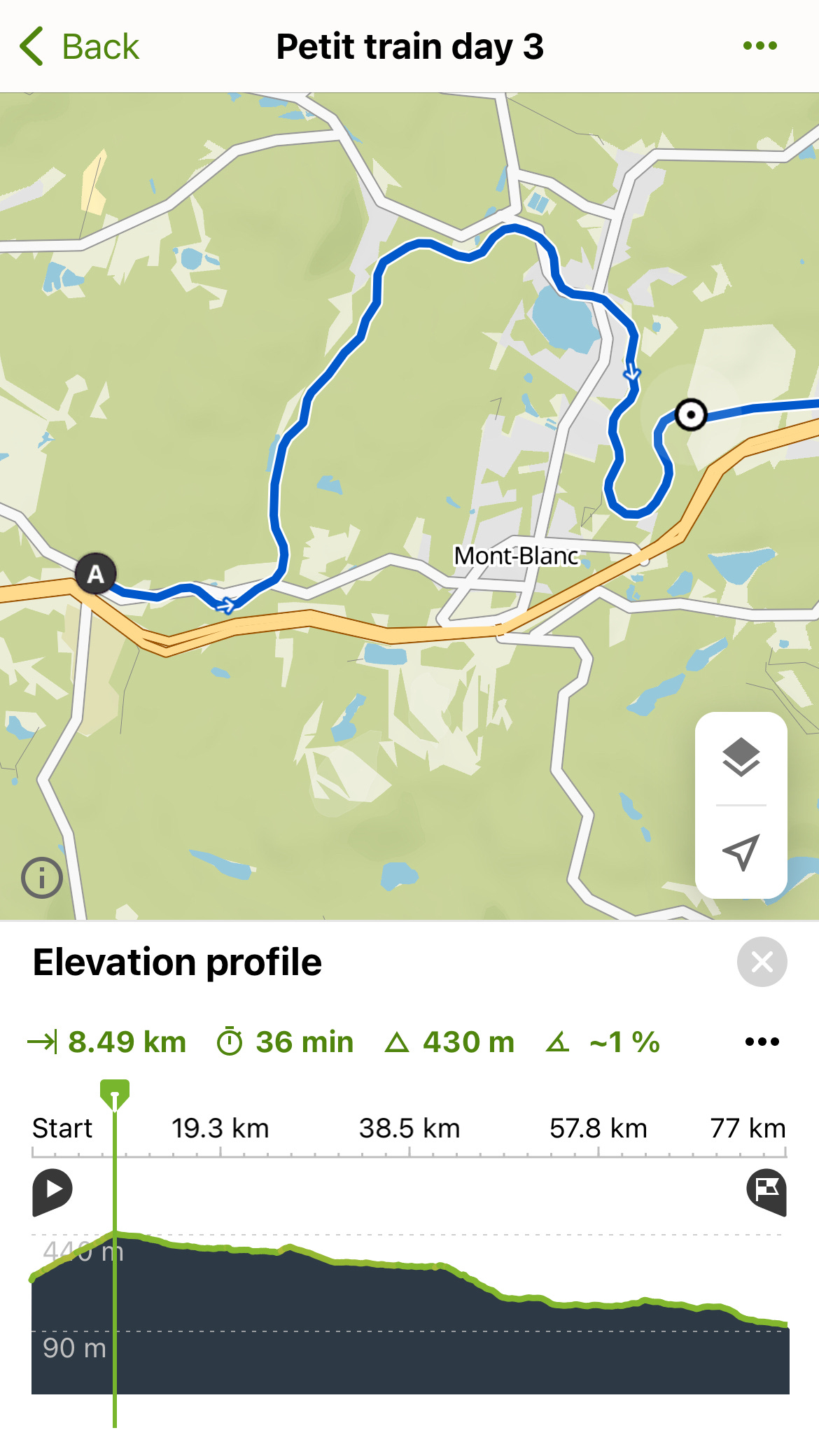The long and winding road
A cycling trip through the Laurentians offers good exercise, great food, spectacular scenery and the occasional opportunity for self-recrimination
The P’tit Train du Nord is a multi-use trail, primarily intended for cycling, that stretches for 200 kilometres from Mont-Laurier, up there in the Laurentians, to the Montreal suburbs.
The “train’ part of the name comes from the fact that it is a repurposed old rail line, winding its way through the hills and over rivers and around lakes like the logging trains of days gone by. This fact also gives the trail what is described in the literature as mostly flat terrain throughout its long distance. After all, trains can’t really go up and down hills, right?
These are lies.
We began our third day on the trail, having made it from Mont-Laurier and past Mont-Tremblant, with what seemed like a steady, gentle climb up a hill. Which it was. But it also just kept going. More than 8.5 kilometres later, we had wound ourselves up and around Mont-Blanc, past Lac Carré — ‘wait, there’s a lake up here?’ — and in between a couple of very large gravel pits. This was, under no way in which the word is normally used, “flat.”
I mean, just look at this nonsense:
Not flat!
Am I exaggerating somewhat here for comedic effect? Maybe a little. But I am also providing a service to you, the reader, should you ever decide that biking for 200-plus kilometres through the Laurentians sounds like a swell time. The P’tit Train du Nord may in fact be mostly flat. But that “mostly” is doing a lot of work there.
None of the preceding is to suggest that it also wasn’t quite enjoyable. Four of us set out in the recommended way, by taking a shuttle that transports cyclists and their cycles from the trail’s endpoint, at St-Jerome station north of Montreal, to the start of the route in Mont-Laurier. You do it this way for a couple of reasons: It is somewhat more downhill to travel north to south, and also your vehicle will be waiting for you at the end. You’d hate to bike 200 kilometres and then remember that your car is at the other end.
Because the trail is never far from civilization, one can stretch out the journey into several days with overnight stays, or spend more hours in the saddle per day and just have the one sleep on the road. (Crazy types could in theory do the whole thing in one go, but that would definitely involve breaking the 22 km/h speed limit on the trail.)
We did three days: 60ish kilometres, 76 km and another 76 or so. For the first night we stayed at a lovely little inn — shoutout Auberge Chez Ignance — in Nominingue, and for the second at a friend’s cottage near St-Jovite, which is why our mileage exceeds the 200 kilometres of the trail itself.



While there is some day-to-day similarity about the thing, there were also some notable differences. The northern end is less busy, and the trail was a bit bumpier and required you to pay close attention to the terrain. (It was also well marked, with orange spray paint pointing out rough spots and pot holes. For some reason these spots were also sometimes marked with little yellow plastic things that could have been mistaken for cyclist booby traps but were presumably not intended as such.)
We didn’t see much on the trail other than trees and cyclists and the occasional bridge over water until we arrived at Nominingue. Which is, randomly, where we saw this:
Why was there a line-dancing class at this little former railway station in semi-rural Quebec? Hard to say. Fun, though.
The area around Mont-Tremblant was the busiest, not just with cyclists out for a little toodle but walkers and strollers and even a few dogs, who are, it should be noted, not allowed on the trail. (I imagine the no-dog thing is a source of great local controversy, but I get it: people zipping along at 20 km/h on their bikes do not peacefully co-exist with dogs on leashes which, when stretched across the trail, are a disaster waiting to happen for a fast-approaching vehicle.) The Tremblant area was also, not surprisingly, the most commercially busy, with more cafés and restaurants for those inclined to take longer breaks. Some cyclists break up the route by spending a couple of days in this area, although I do not advise trying to pack golf clubs on your bike.
By Day 3 it was the home stretch, and the previously mentioned stupid climb up a hill. We at least had the benefit of doing that part while fresh in the morning. Doing it at the end of a 75-kilometre day would have been a real kick in the nuggets. The other upside: what goes up must come down, and so there was a lengthy, smooth decline on the other side of Mont-Blanc that felt like it lasted the rest of the morning. Thumbs up for this section.
Eventually the ride brought us into the more populated area of St-Jerome, a suburb of Montreal that is next to the ill-fated Mirabel airport. The trail was busy again, and decidedly less mountainous. It felt like a typical ride on a city trail, which was only funny because we had begun that day in the quiet chill of that haul up Mont-Blanc, with hardly anyone else around us and the only sounds the muttering under our breath. (Maybe that was just me.)
The cool thing about P’tit Train du Nord is that, despite my earlier griping, it really is suitable for cyclists of all persuasions. You can do it in as little or as much time as you want, and you can also use e-bikes if that’s more your speed. I’ll admit I remain a little confused by the people who take fully electric vehicles out on these things and zip by you while very clearly not pedalling at all, but I guess it’s better for you than sitting on the couch. Chacun a son gout.






